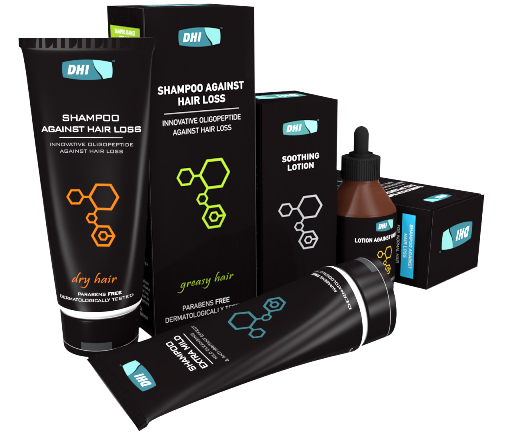Know Your Hair & Scalp Type Before Buying Hair Products


Every hair type requires a special hair care routine. So, before choosing hair products, especially your shampoo and conditioner, it is essential to know your hair and scalp type.
The hair cuticle, which is your hair’s outermost protective layer, comprises overlapping dead cells that give an appearance of fish scales facing downwards. Based on the structural placement of these overlapping cells, hair can have the following types:
- Silky: In silky hair, the cuticle is smooth and flat because the cells are layered very close to each other. This kind of tight layering gives shine to the hair and protects the hair’s inner layers from damage. Due to less space between adjacent cells, moisture movement in and out of the underlying cortex is minimized, thus maintaining hydration balance.
- Normal: In this type of hair, the cells forming the cuticle have some space between them, which gives them a slightly aberrated look. Since the chance of losing moisture from the spaces is a little higher, the hair is not very shiny and smooth.
- Coarse: Cells in the cuticle are placed widely apart, leaving a lot of space due to which moisture can be lost very quickly. This makes the hair look frizzy, dry and coarse.
- Treated: Chemical processes, weathering, heat treatments like straightening, pressing, crimping, etc., can lift the cuticle and disrupt its structure, thus making it coarser and drier.
Like the hair cuticle has different types due to the structure of the overlapping layer of cells, there are different scalp types depending on the pH balance of the scalp and the amount of oil it produces. The human scalp is supposed to be mildly acidic in nature, and the ideal pH level should be 4.5 to 5.5. This acidic environment is required to keep micro-organisms at bay. However, too much acidity can make the hair greasy, and too little can strip it of its natural protection giving way to fungus and bacteria.
The scalp is lined with sebaceous glands that produce natural oils that give strength and lustre to the hair. Scalp types are defined based on the pH and activity of sebaceous glands.
Over-active sebaceous glands result in noticeable greasiness in the scalp that also percolates towards the hair strand giving the hair also a greasy look. Signs of an oily scalp include clumping of hair, the flatness of hair, and the scalp becoming oily within a day of washing hair.
- Dry Scalp: This type of scalp is a result of less than required acidity and insufficient amount of natural oils produced by the sebaceous glands.
- Normal Scalp: Generally considered an ideal scalp type; this type may sometimes be a little dry or oily depending on the weather and daily routine.
- Combination Scalp: A combination scalp is the one having dry top layers on the scalp and a deep build-up of oil underneath. The hair in this case tends to be lifeless and with a wiry texture.
Choosing Shampoo and Conditioner According to Hair and Scalp Type
Shampoo Selection
Type of shampoo should always be chosen as per the scalp type as shampoo is to be applied thoroughly to the hair roots and scalp to cleanse them of dust, pollutants, micro-organisms and build-ups.
Dry Scalp: If you have a dry scalp, look for shampoos with essential oils that are good for hair. Also, look for properties like ‘anti-irritant’, ‘soothing effect’, ‘moisturization’ etc. Additionally, ingredients like natural peptides and amino acids help give dry hair a smooth look by filling the gaps in cuticle.
Oily Scalp: For oily scalp, look for properties like ‘sebo-regulation’, ‘balancing’ as such shampoos help eliminate excess oil from the scalp and hair.
Normal Scalp: For normal scalp, choose a shampoo with moisturizing and nourishing properties as it will maintain an optimum balance between dryness and greasiness in all weathers.
Combination Scalp: As combination scalp may be due to sensitive skin, mild shampoos having moisturizing and soothing properties should be used.
Conditioner Selection
Conditioners are to be applied to the hair strands and not the roots or scalp in order to replenish the moisture lost during shampoo. Conditioning your hair should be a mandatory step in your hair wash routine as conditioner smoothens and repairs the hair cuticle and balances the cuticle pH thus reducing tangles, increasing shine and making hair more manageable.
Silky Hair: For silky hair, look for volumizing and strengthening conditioners.
Normal Hair: For normal hair, choose balancing and hydrating conditioners.
Coarse & Treated Hair: For coarse and treated hair, choose a conditioner that promotes repair, controls frizz and protects from heat damage.
If you would like more information, don’t hesitate to book your consultation
